Mount Everest / 珠穆朗玛峰
April 7-May 24, 2023
8848m
Sagarmatha National Park, Nepal/China
The world’s highest peak sits on the border between China and Nepal and has three names. The western name Mt. Everest is the most commonly used and known by everybody but the Tibetan name Chomolungma (珠穆朗玛) is more used by the locals as well as in China. The peak is also sometimes referred as Sagarmatha in the Nepal side. Unlike many of the Everest climbers an ascent of this peak hadn’t been my lifetime dream because commercial expeditions like Mt. Everest has never been mainstream in the North American culture. In fact, I observed most climbers on Everest coming from Europe, Asia, Mexico or the flat eastern parts of Canada and U.S., than the western North America. But on the other hand I’m a peak-bagger so when Eric Gilbertson invited me into this trip about a year ago I was instantly game. The minimal requirement for Everest is time (2 months in April/May), money (at least 40,000 USD), experience of 6000+ meter climbing and mental/physical determination and energy and I possessed all of them.
Our team of 4 – Eric from Seattle, myself from Vancouver, Matthew Gilbertson from San Jose, CA. and Darren V. from Salt Lake City and we would use Seven Summit Treks (SST), the largest but also a cheaper Nepali touring agency. Among the 4 of us, Eric would attempt without supplemental oxygen nor sherpa support whereas the rest of us would go with the standard package. As always in life, nothing cheap comes without a reason. The standard Everest package provided by SST has only 5 oxygen bottles per climber and this eventually proved to be “not quite enough” for many of us. By comparison climbers from Maddison Mountaineering had more than double of our oxygen bottles but they also paid more than double of our price. I eventually learnt that on Everest, the more you pay (up to over 200,000 USD), the safer and the higher the chance of success will be. I think all of us underestimated this objective. I also naively spent 10,000 extra dollars to sign up for Everest-Lhotse double-header program but in the end I did not have the stones to put down two 8000ers in one push. 2023 spring season turned out to be the deadliest in Everest’s history. Alan Arnette had a good write-up covering that and the deeper reasons behind. That’s the background, and below is the trip itself.
Because of the no-O2 plan Eric opted to arrive in Kathmandu, Nepal in late March and Matthew and Darren also decided to be with Eric. I thought this was too early to be needed to booked my airlines to arrive in Kathmandu on April 5 and started trekking about 9 days after Eric’s group. Even this schedule was on the early side and was not needed. The bulk part of the SST group started ~5 days later than me and we were all on the same page eventually. I routed my airlines through Korea so I could visit a new country and even managed to bag a hill during the 20-hour layover. Chhang Dawa Sherpa, the owner of SST welcomed me in Kathmandu and booked me two nights in one of the better hotels (Fairfield Marriott). On the second day (April 6) I did some gear checks with the Sherpas and earned a few extra hours to hike Shivapuri on the north side of the city. That hike was longer and tougher than anticipated. With over 1000 m gain and descent on staircases one of my calves was aching for a few days afterwards. That same night we had a group dinner and went to bed early. On April 7th the alarm was set at 4:20 am to take a small, fixed wing plane to the village of Lukla at 2850 m. Because of the logistics associated with airport etc. we did not start hiking until after 10 am. I then learnt that Dawa had put me into the trekking group of UKALO for the 8-day approach to Everest Base Camp, led by Gesman Tamang, one of the strongest climbers on Earth.

I later learnt that UKALO is a fancier agency that books you into better hotels (hence better food) so I somehow got lucky on the approach. The climbers from them also did not come to Lukla by a fixed wing plane. Instead, they got their private helicopter ride from Kathmandu. As expected on Everest one will never be alone and right off the bat I started to make new friends. That’s one reason why I didn’t mind to not hike-in with Eric’s group. In fact, they started too early and they were alone for many days in Lobuche and the base camp. For much of the trekking I was with Lauren from New York, but unfortunately she wasn’t planning to climb Mt. Everest so we couldn’t share the whole journey together. The objective of Day 1 was Phakding, a small village in the middle of the valley at 2600 m elevation so there’s actually more descending than ascending. The trekking pace was rather slow and we took numerous lengthy breaks, but we needed that for proper acclimatization. The hotel we checked in had private bathroom and hot shower. I anticipated this fancy trend would last all the way to the basecamp but it did not.
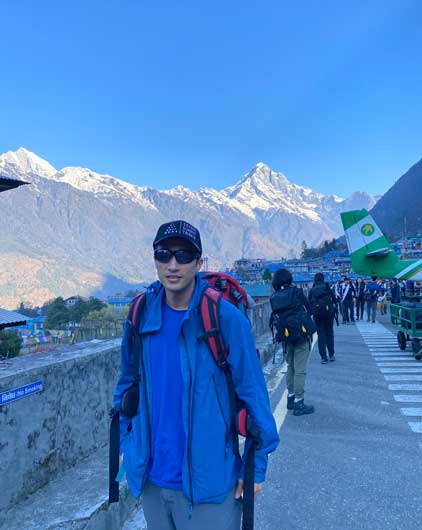
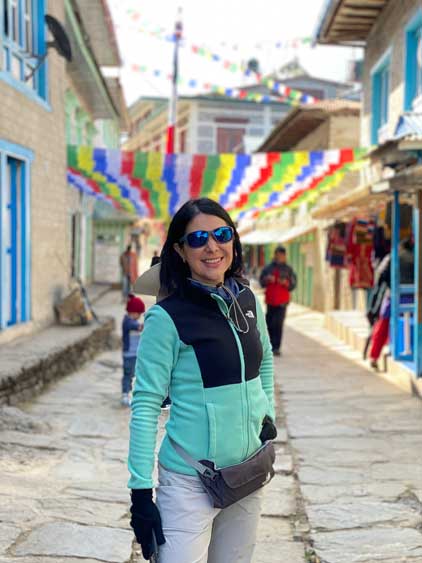


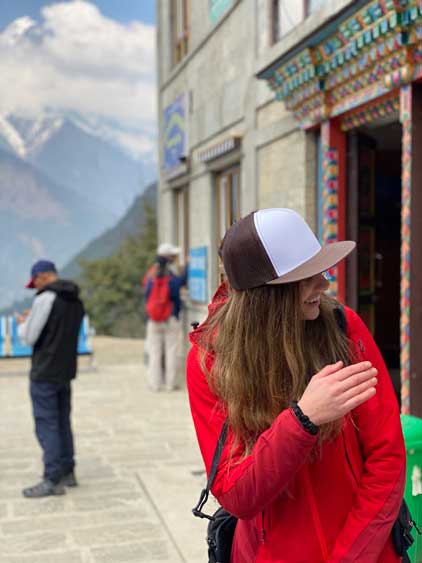

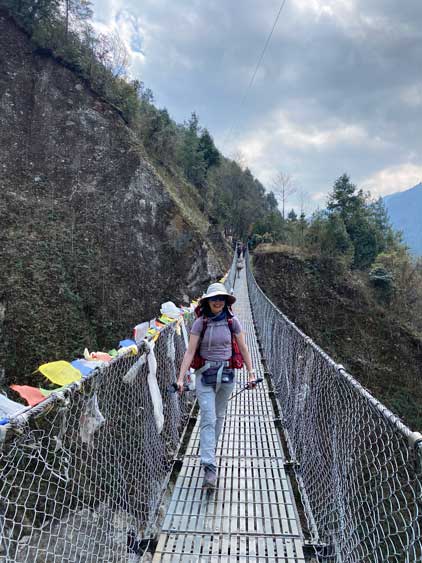

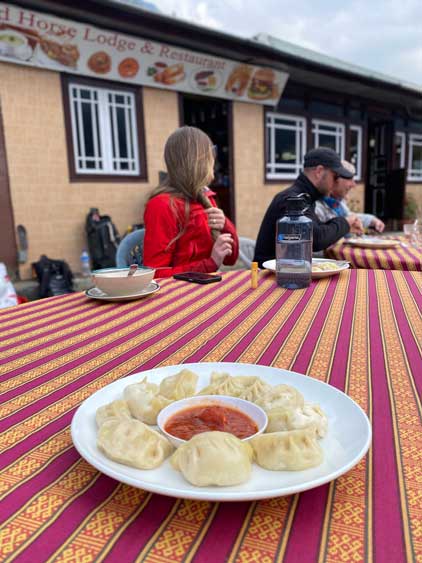

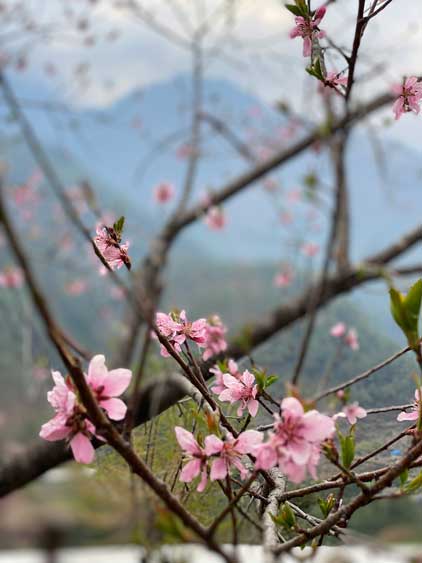

On the following day we hiked through some rolling terrain, crossed the Hilary Bridge and ascended slowly but steadily to Namche Bazaar at 3440 m. This village is literally built in the sky without any vehicular access, so the entire construction must be done by porters and helicopters so that’s very impressive. To this date I still don’t get how that was possible. On Day 3 we did an acclimatization hike to Hotel Everest at 3800 m and descended back to Namche. I left the group briefly because I saw two “red dots” on my peakbagger app. To tag those “dots” required minimal detouring so I couldn’t resist. For the two nights in Namche I no longer had private room. I shared room with the Mexican girl Edna who’s also from SST but was put into this same UKALO trekking team. There was still a private bathroom and hot shower, but those would end soon after Namche. My sleep and appetite was normal so I adept to this altitude well.

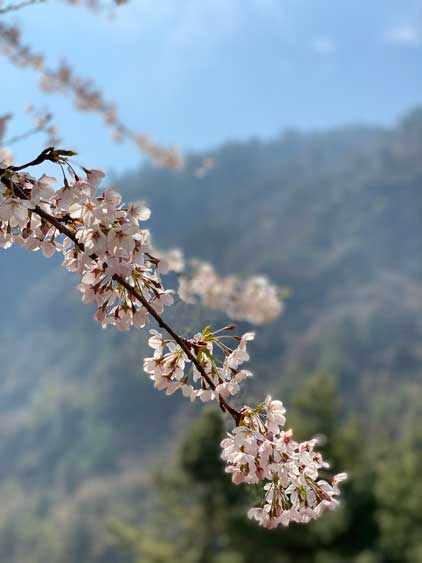


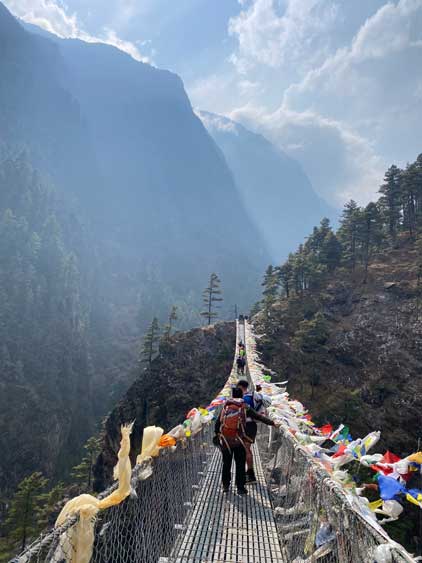
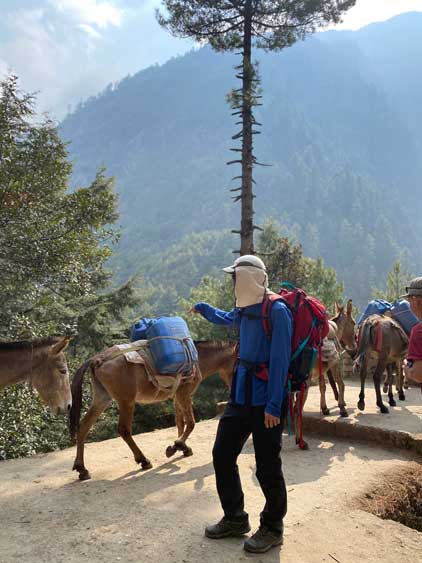


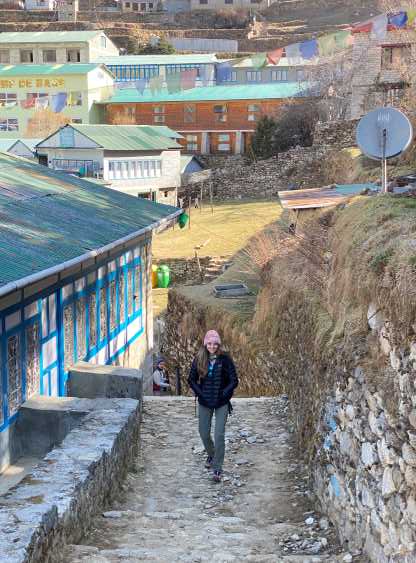







Day 4 saw us descending to yet another river (suspension bridge) crossing at 3300 m before ascending to Tengboche at 3850 m. We visited a monastery in Tengboche but didn’t sleep there. The Sherpas told us to find “Hotel Good Luck” in Deboche but myself, Lauren and Edna spent 20 minutes searching around and couldn’t find it. We decided to turn around to regroup with Gesman and the hotel turned out to be beyond Deboche in a place called Millingo. The hotel was good, but there’s no more cell reception, private bathroom nor hot shower. There wasn’t even a private charging outlet (so they could charge us $$ for phone charging). Thankfully I had brought a battery pack so I didn’t have to pay them for that. In terms of the loads carrying I had two duffels to be shipped directly to Everest basecamp by helicopter (this turned out to be a problem later on), and one trekking duffel to be carried by porters together with us. I only needed to carry the basic day-hiking needs during the trekking. These Himalayan porters carried averaged over 50 kg.

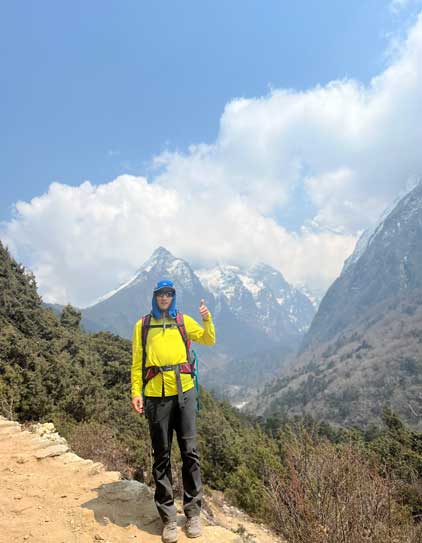




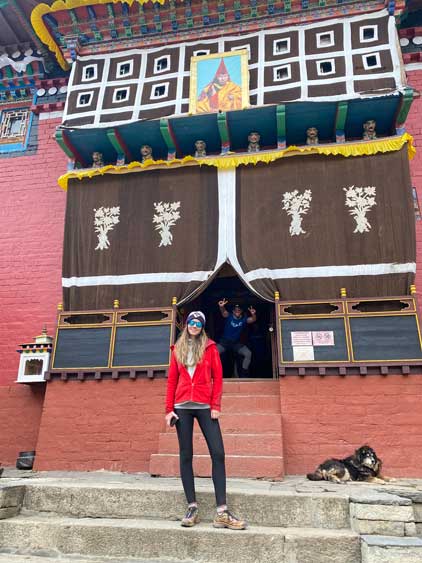

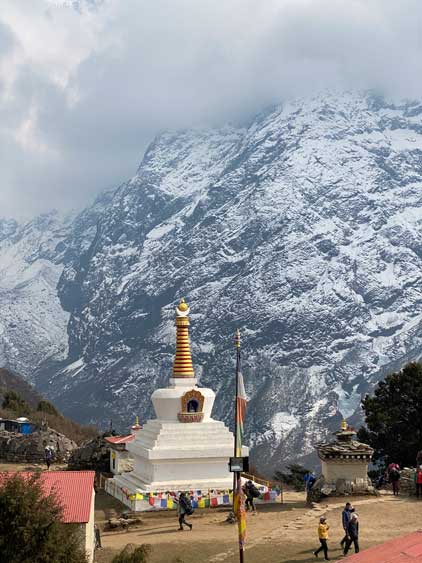



The views finally opened up as we trekked from Millingo towards Dingboche (4400 m) on Day 6. After a few turns we had Ama Dablam displaced majestically in front, and then we could see the south face of Lhotse with Mt. Everest poking behind. This day was rather scenic but starting from Dingboche we officially entered the higher altitude zone. I later learnt that Dingboche was also the place where trekkers started to drop out, as sleeping at 4400 m is not not the averaged. I developed some minor headaches but decided to to just tough it out, whereas most of us started to apply Diamox at this stage. The next day was another acclimatization day and the objective was to tag the summit of Nangkartshang 5083 m. I went ahead at my own pace and rested for over an hour on the summit to further acclimatize. The hotel and food in Dingboche was surprisingly not too bad. There’s a group hot shower and I used it on the second night. The cell reception was completely gone at this stage so I spent 6 dollars to pay for a 24-hour wifi card. This would become a “norm” in the next month and half. We heard three sherpas from Imagine Nepal had died in Khumbu Icefall. Apparently a piece of serac broke and sent them all into a crevasse. The bodies couldn’t be retrieved.
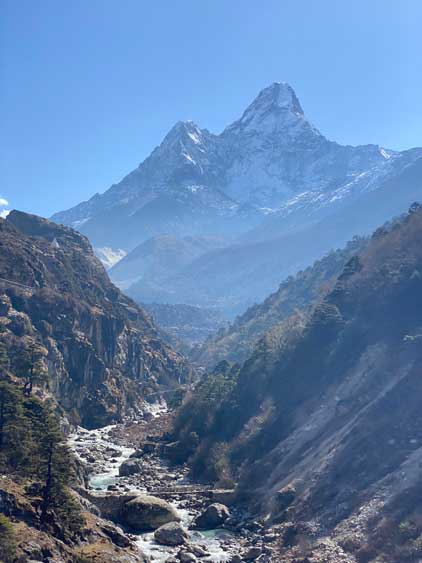
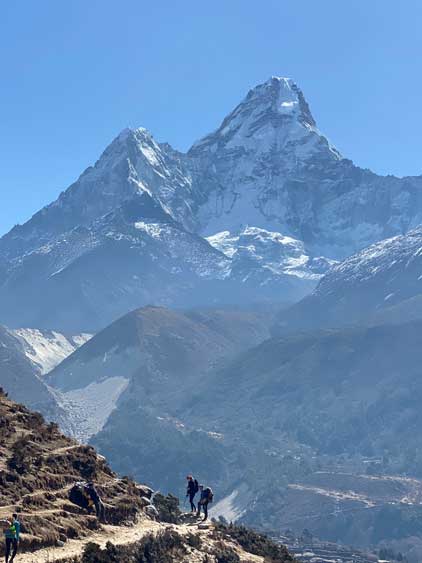




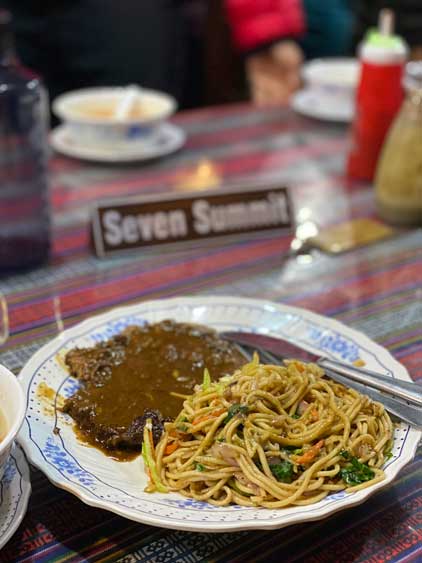
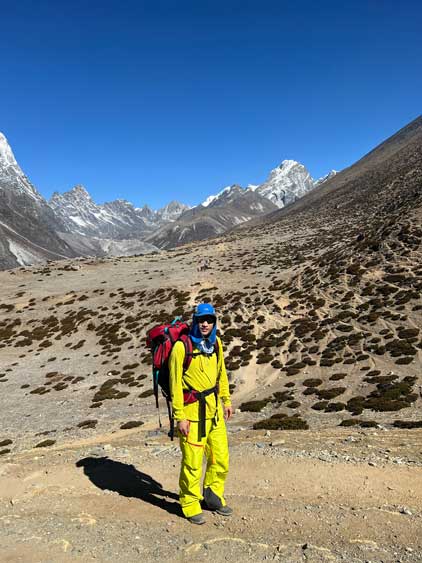
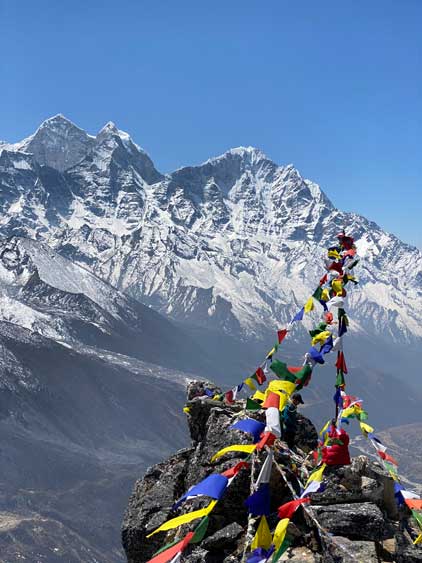



We were finally in the alpine zone with no more tree around. Day 7 we marched steadily past Dukla to Lobuche at 4900 m. There’s one interesting creek crossing just before Dukla done by rock-hopping, and the final kilometer to Lobuche felt like eternity. I was feeling the altitude, but decided to keep toughing it out. Based on my past experience I knew I needed some extra time from 4000 m to 5000 m range, but I always do better from 5000 m pushing to above 6000 m. Ideally I would want a rest day in Lobuche, but on Day 8 we kept the original plan and marched past Gorak Shep to Everest Base Camp (EBC) at 5300 m. The dome tents of Seven Summit Treks were located on the very far end of EBC and from the start to SST’s tents took me almost an hour of walking. It was unbelievable that the EBC, built on Khumbu Glacier was actually the largest “village” in the entire Khumbu region. This year the government issued over 470 Everest permits so a total of over 1000 climbers/sherpas would be here. The food service in SST’s EBC was better than anticipated. I had brought some of my own food to to shipped to the base camp but that proved to be unnecessary. They provided more than enough food for everybody. At the base camp I met Pemba, a leading sherpa who’d also be my personal sherpa. There’s one advantage of signing up for the double 8000ers program that they had to assign me a stronger sherpa. I did however, discover that one of my climbing duffels did not arrive and my 8000m boots were in that bag.



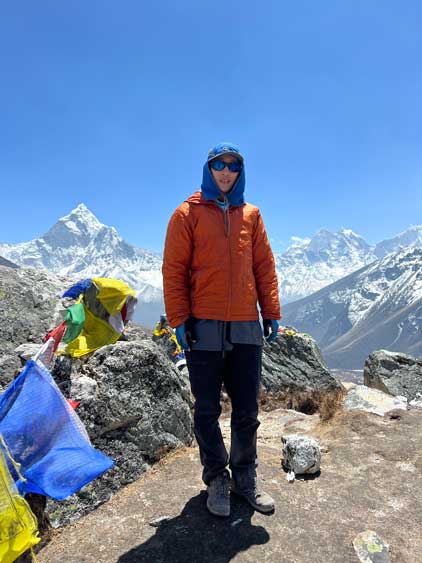




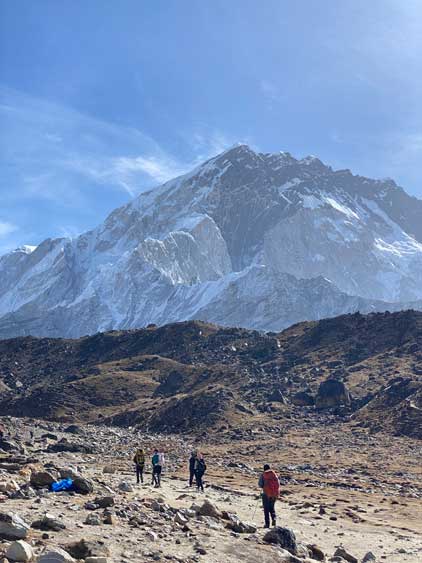

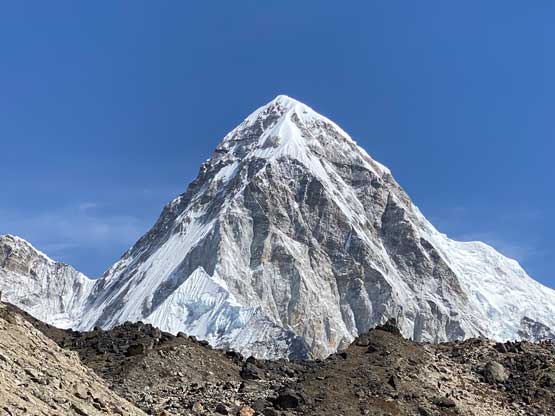



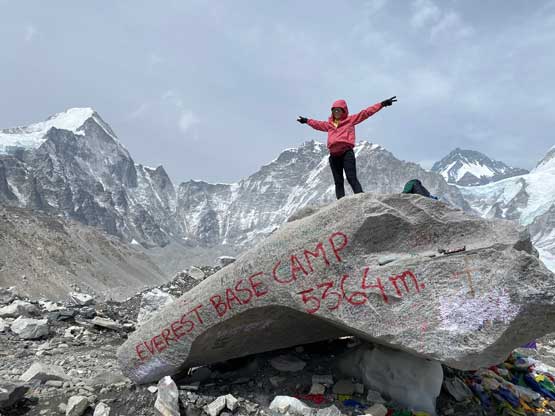


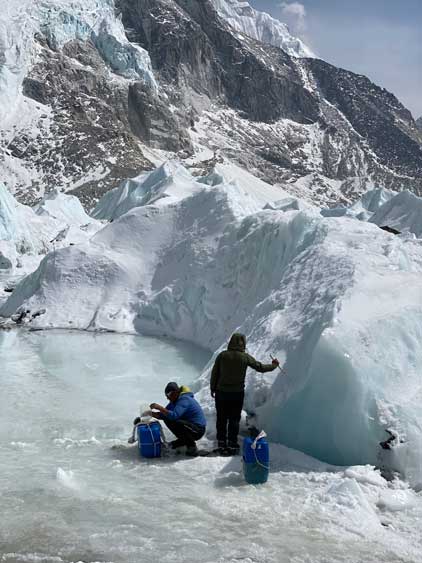


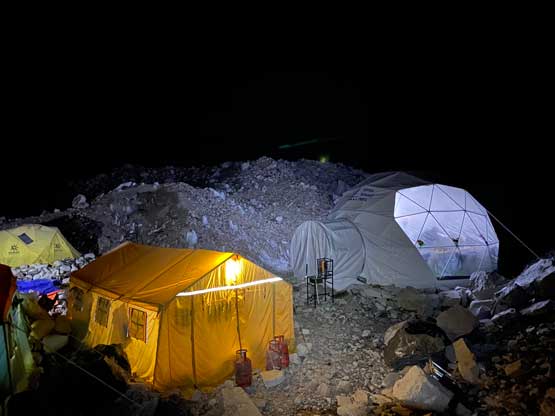
I immediately bought a 1G base camp wifi card for 40$ and over the next two days I was busy communicating with Thanes, the manager of SST in Kathmandu. The problem with my duffel was that I did not write a name on it and did not lock it, and Thanes would “try his best” to find it. I told him that if SST somehow lost it then he would have to buy all the gears and send to base camp and he agreed. It would be still nicer to have my own boots since I had already broken into them so there’s less chance of getting blisters, but at this point there’s nothing I could do. After the 3rd night at base camp my headache situation was finally improving and I decided spontaneously to hike Kala Patthar (5650 m) that would require half a day. The frustrating part was that I had to hike down to near Gorak Shep and then hike back to EBC later in the day. I left after breakfast at around 9 am and didn’t get back until 2 pm. The hike was longer than expected and I missed out lunch. That evening I started to feel my throat. I didn’t think this was a serious problem but the throat pain would eventually last for almost a month. It turned out that I was one of the first few to get sick (unknown virus infection) and a month later, 80% of the climbers and sherpas in EBC all became sick and many of us went home without even trying the summit push. The 1G card got used up so I bought a 10G card for 200 dollars.


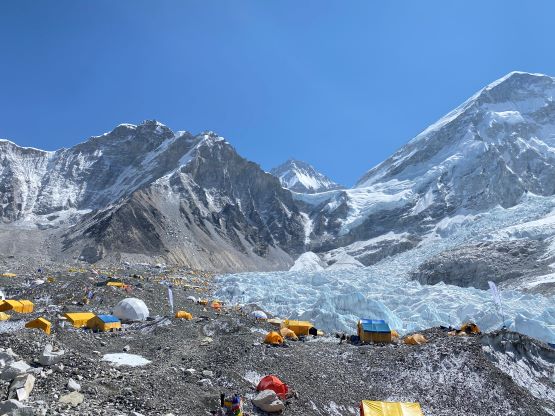

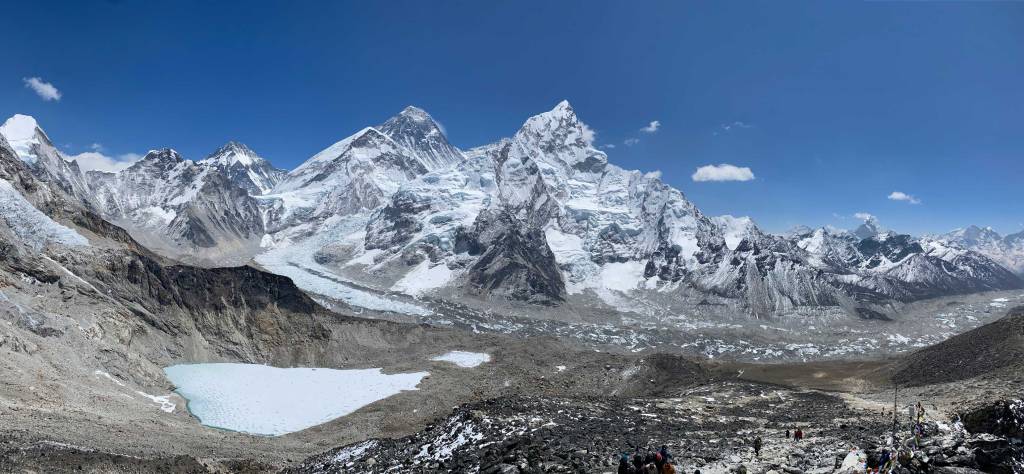
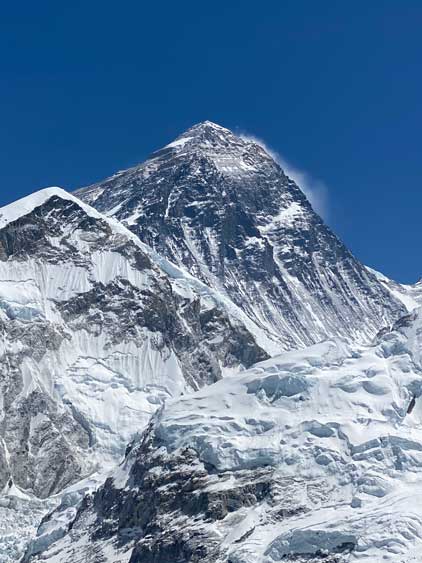
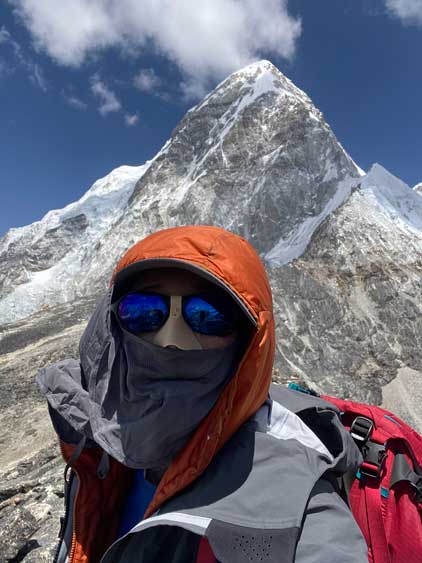
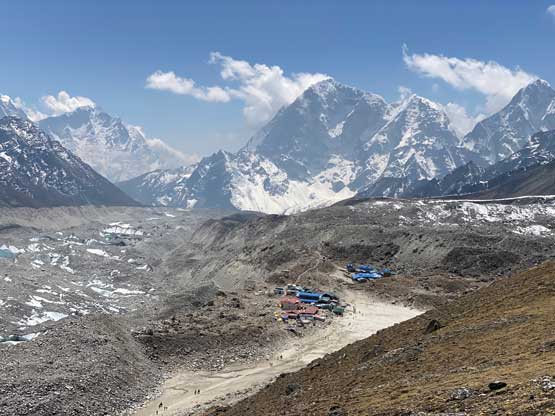


Due to the delay of my bags and the hike of Kala Patthar I was two days behind Lauren/Gesman’s group for Lobuche East climb. I was hoping to join them for the climb but I couldn’t. I still didn’t hear anything back from Thanes by the time Pemba and I left for Lobuche so Pemba rented me boots (La Sportiva G5, size 42), harness with jumar and crampons for additional 150 dollars. I made SST to pay this rent since it wasn’t my fault to not having the gears. By this point Eric and Darren had already completed their Lobuche climb which is generally considered as the “first rotation”, whereas Matthew was sick and had gone down to Pheriche (4200 m) to recover. The original plan was for Pemba and I to get to Lobuche’s high camp in one push but my sickness had started and I felt too weak for that. In the Lobuche village I made the spontaneous decision to abandon the original plan and spend a night there. A few hours later the rest of the group all arrived and we would be doing the climb (sort of) together in the next few days. It was nice to be sleeping on a real bed again and the food in Lobuche, though not luxurious, was still better than the food in base camp. The dinning area was very crowded with lots of people coughing.

The next day would be a leisure ascent to Lobuche East’s high camp, but the terrain appeared daunting. There’s some scrambling required near the top of this 300-m grunt, followed by over 50 m of elevation loss on the far side that must be regained later. We passed a massive group of Chinese climbers but we ended up tenting right next to them. It was a busy afternoon. My sherpa put me in one of Nimsdai’s tents as ours were full. To my surprise Matthew G. went into my tent as I was resting. Matthew had taken a helicopter back to base camp and walked from base camp directly to Lobuche’s high camp to join our climb. This meant Matthew was back on schedule. I had previously never used a jumar so Pemba kindly gave me an hour-long training. I was too lazy to figure that out at home and it’s much easier to just learn with the sherpa on-site. In dinner time I went into the Chinese tent and made more new friends. The plan was to start climbing at 1 am so Matthew and I “woke up” at midnight. I did not get any sleep and my throat was really bothering me that I had completely lost my voice at this point. Still, I did not want to give up and decided to just tough it out.







The start of the climb was mostly on rock or snow-covered rock that required some experience in scrambling. There’d be no fixed rope until much higher up. In about half an hour Matthew, myself and our sherpas caught up to the Chinese team and in another half an hour we passed all of them. Despite the throat pain I was feeling fine in energy level so we kept marching up. Pemba took over the lead and we scrambled through the entire lower mountain without even donning crampons. A few spots involved 3rd class scrambling with some exposure. We strapped crampons on at the start of the fixed rope as we ascended onto the upper glacier and it was here that I started to feel the illness and slowed down. I was also my first time ever using a jumar on fixed ropes so it took me a while to find the rhythm. Thankfully at this point we were not too far from the summit and I think we eventually summitted about an hour later than anticipated due to me struggling. It’s worth noting that the “summit” of this climb isn’t the summit of this mountain, but rather the end of the fixed line on the summit ridge where things become technical. 99.9% of the climbers would stop here and so did everybody in 2023 season. This is overall just an acclimatization climb. Of course the none of the touring companies would address this problem that the route doesn’t go onto the true summit when they advertised their trips.





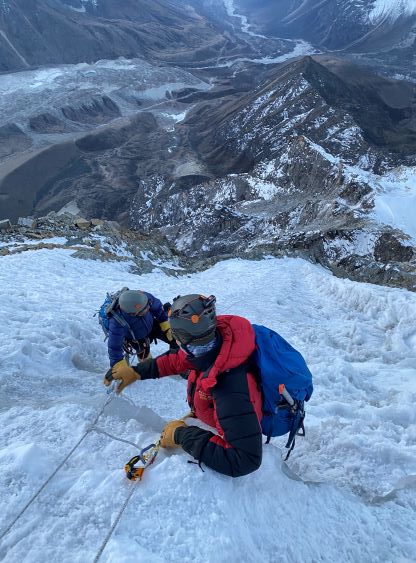

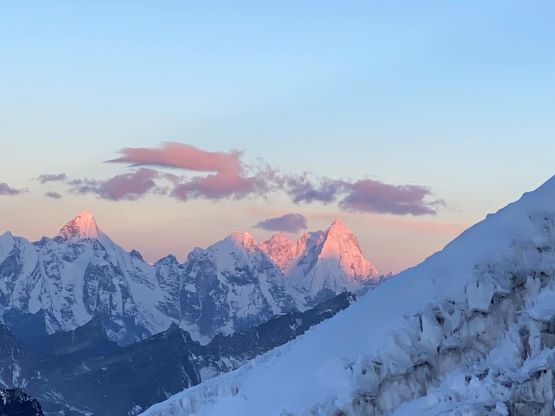



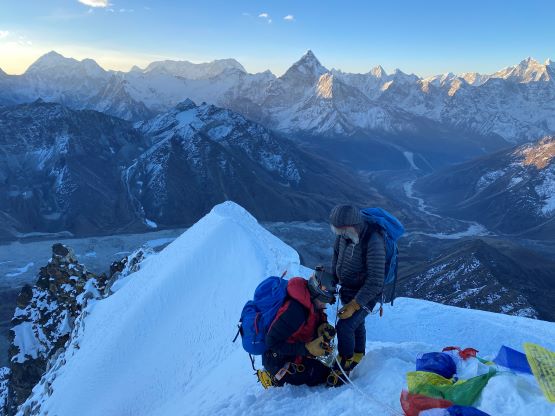
The descent is always about technique than strength so even though I was exhausted I still managed to descend in a timely manner. While descending Pemba taught me how to pass a gang of ascending climbers, which proved to be essential later on Mt. Everest. The 4 of us eventually got down to Lobuche High Camp mid-morning with the whole day ahead of schedule. Matthew and I went into the tent for a much-needed nap but by 2 pm Pemba woke us up to descend to the village of Lobuche. I barely had enough energy to re-ascend that 50 m elevation and I significantly slowed down afterwards. That night I was not feeling any better so I made the decision to hike down to Pheriche (4200 m) for a few days to recover. Meanwhile the rest of the team hiked back to EBC to prepare for the rotation ahead. I leisurely descended to Pheriche in a couple hours and obtained a room in Pheriche Resort. After lunch I walked to a nearby clinic for consultation and some medicine. They only gave me Tylenols and Ibuprofen which I already had, so that wasn’t really helpful. Over the next 2 days my nose was getting really bad with secretion coming out every few minutes but my throat’s pain was feeling a little better. I was planning to take a helicopter back to base camp, but the weather had turned shit that it was impossible to fly. I didn’t want to completely rely on that, so started walking back. It took me two days with one night spent in Lobuche. Unfortunately the added walking in bad weather worsened the sickness again and the throat pain went back that same night after I got back to the base camp. I also missed out the Puja ceremony by going down to Pheriche, but that’s okay. Meanwhile I did hear one good news that my climbing bag had finally arrived. Later I realized that it’s been opened and my down pants and some food got stolen.

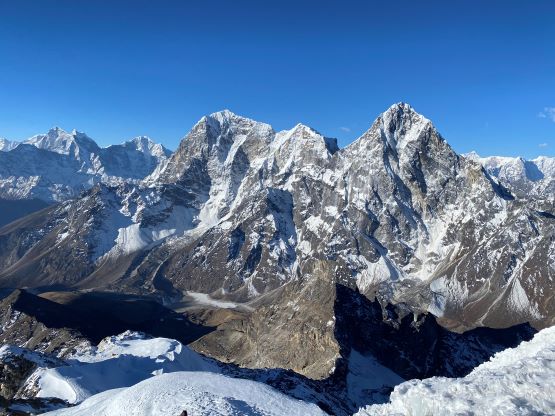
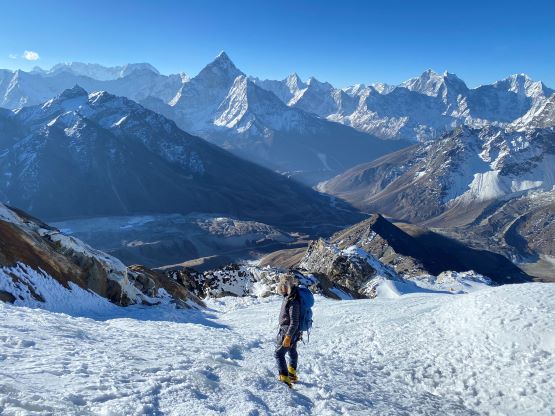



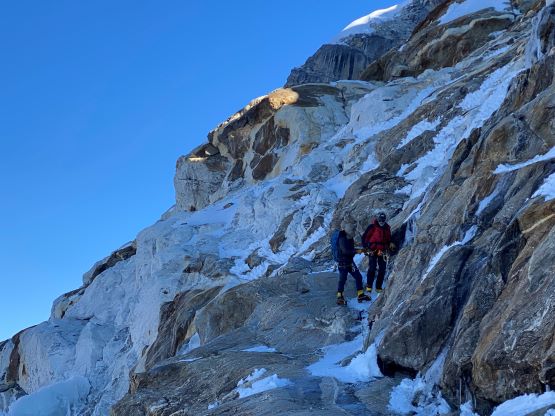

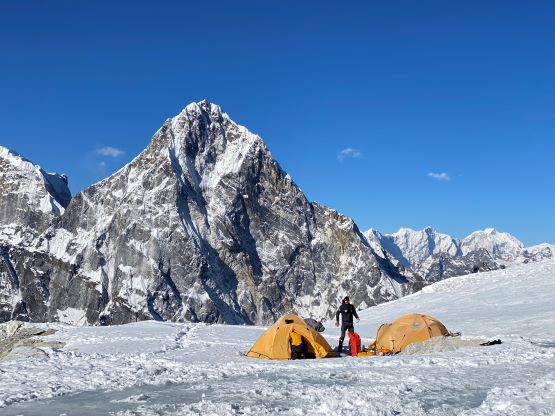
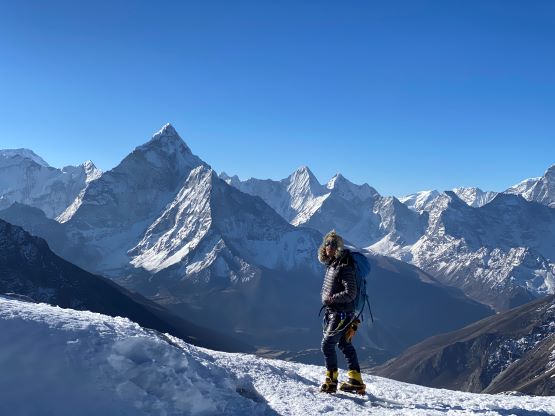

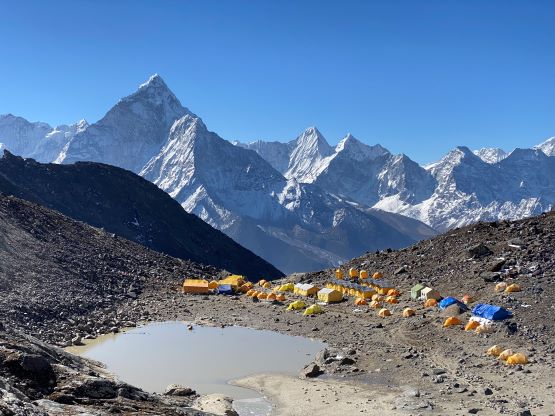



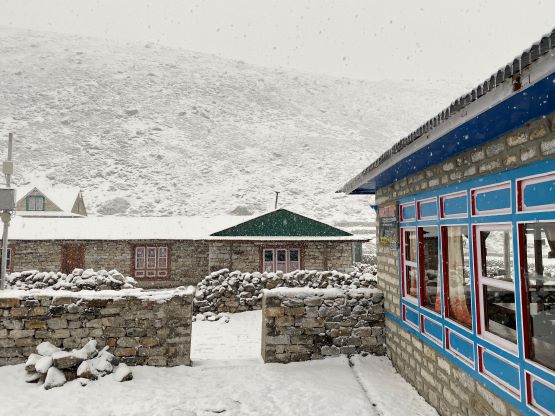


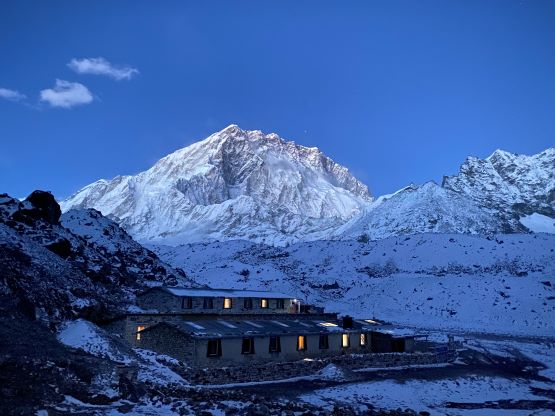


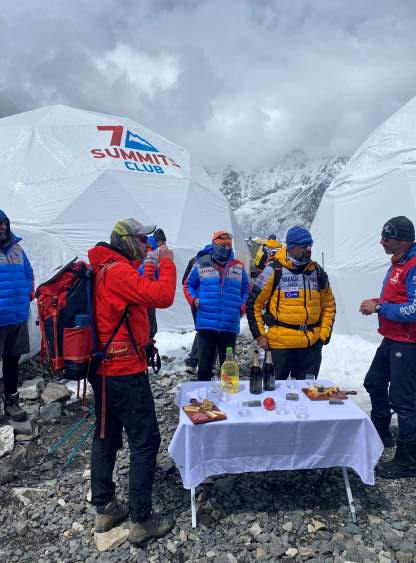

By this point a designated doctor for SST climbers had arrived in basecamp and he wanted me to have two rest days before starting the rotation (acclimatization to Lhotse Face). This meant I wouldn’t be going with Matthew and the majority of the team but rather alone with my sherpa. Fortunately, there was a shortage of tent in either camp 1 or 2 that half of the team was then forced to start one day later, so I had company, at last. The rotation would require 4 days but the weather was supposed to collapse on the 4th day, so those forced to start later weren’t particularly happy. Dorjee, the other leading sherpa assured us that the descent could be done safely in any weather so we shouldn’t worry. Two days later it’s finally my turn to test my fate in the infamous Khumbu Icefall. I was still feeling ill but I estimated that I still had about 70% energy that I should be able to push to near 7000 m and get down.

The gang left base camp at 2 am following Pemba’s lead. The first stop was the so-called “crampon point” meaning we would all don crampons there. In terms of footwear I opted to just wear my Phantom 6000 since the objective of this rotation was to only touch 7000m, or lower than that. I left my 8000 m La Sportiva OlyMons in base camp for solely the final summit push. Pemba also made me to give him the smaller -32C sleeping bag to carry since he thought the -40C bag would be overkill even in Camp 4, so technically I didn’t have to purchase that massive -40C bag after all. The big sleeping bag was then left luxuriously in base camp. In addition to the sleeping bag Pemba also carried my down suit (to be left in camp 2 for later use), and I had to carry everything else myself. The backpack was not as light as I was hoping for. The route through Khumbu Icefall this year was longer than usual with a lot of meandering and up-and-downs, but easier with less ladders. I appreciated that because I found the ladder crossings to be particularly scary. I started to cough badly about halfway up and had to slow down for quite a lot. The upper reach of the icefall was particularly difficult with several vertical walls to jumar up, as well as half a dozen ladders bridging bottomless crevasses. It was a lot longer than I thought to reach camp 1 and I called for numerous long breaks to “cough it through”. Still, I was the second fastest in this day in our group. The rest of the day was then spent resting in Camp 1. The day had become extremely hot thank to solar radiation. Our sherpas taught us to put sleeping bags on top of the tents to provide some sort of shades and it worked. I even got some sleep during the day and then slept through most of the night.

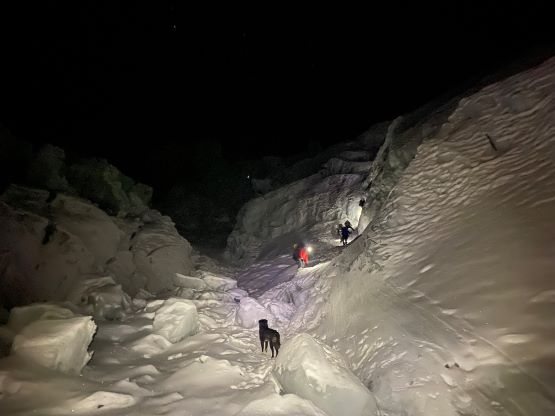


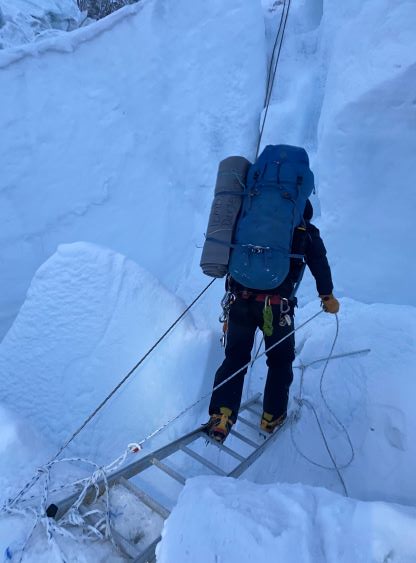


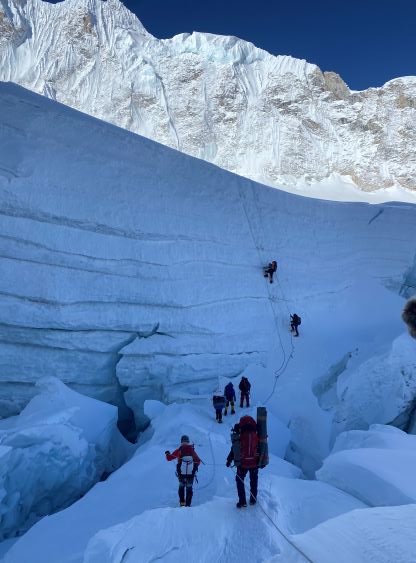





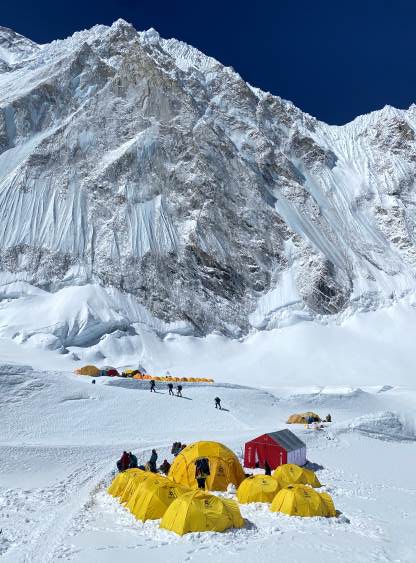

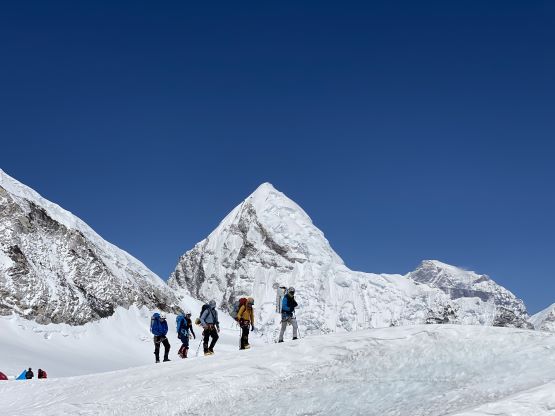
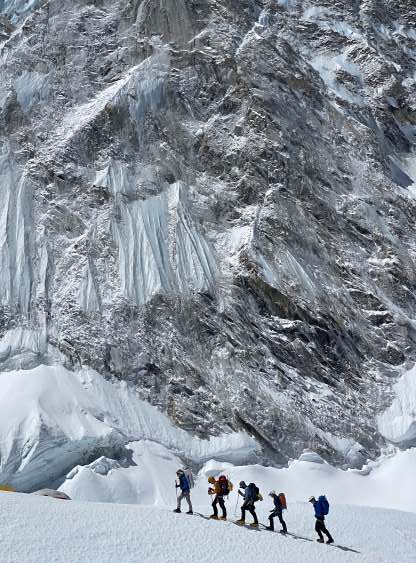


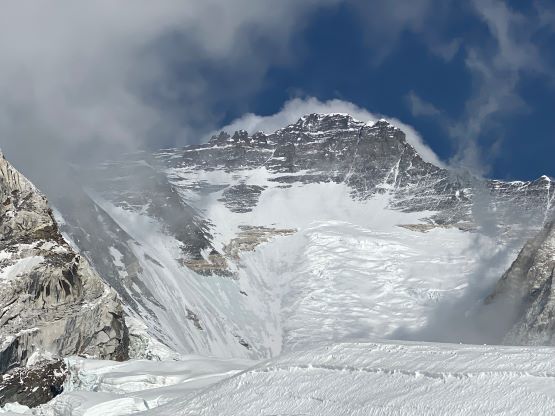

Probably because of the good night of sleep I felt the throat pain to be mostly gone in the morning, so I had an easy day from C1 to C2. This day was mostly just a plod from 6050 m to 6450 m with only a few interesting steps, mostly near the beginning. Pemba and I went ahead and this time I was the fastest in the group, taking only 3 hours. I then learnt that Matthew’s first group was still in C2 taking in a rest day. Resting and sleeping at Camp 2 was unfortunately not easy for us and my throat’s pain and coughing was coming back. I only managed some intermittent sleep that night. On the 3rd day of this rotation it was difficult to get going but we had to since we didn’t have the time/weather to take a rest day. Pemba and I only made to the bottom of Lhotse Face at 6750 m and called it. I wanted to go further but I trusted Pemba that going further was not required, so reluctantly turned around and accepted yet another “short day”. A few of us went to 7000 m and Matthew even got to C3 at 7050 m. In retrospect Pemba was correct that the point where I got to was good enough for acclimatization purposes.

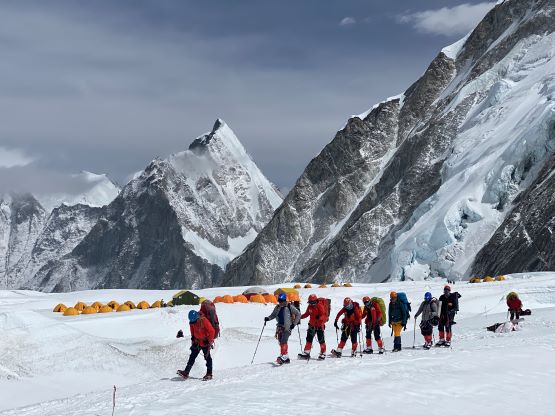

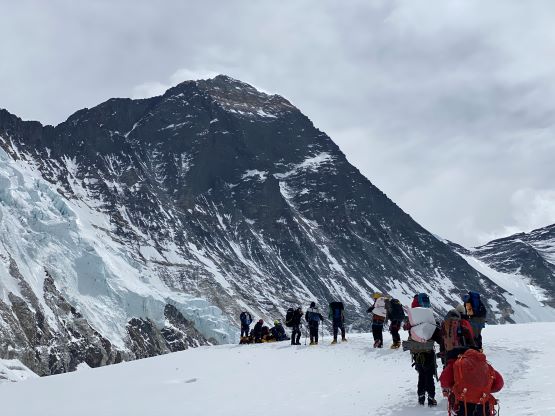
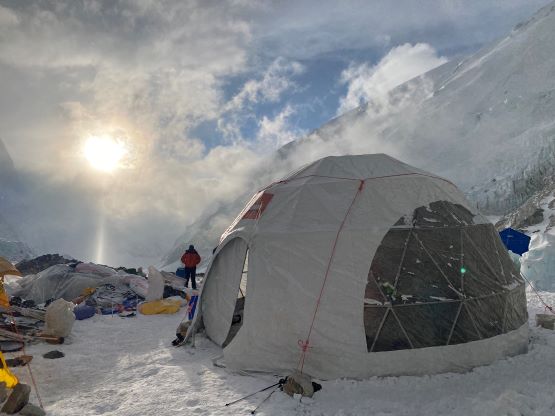
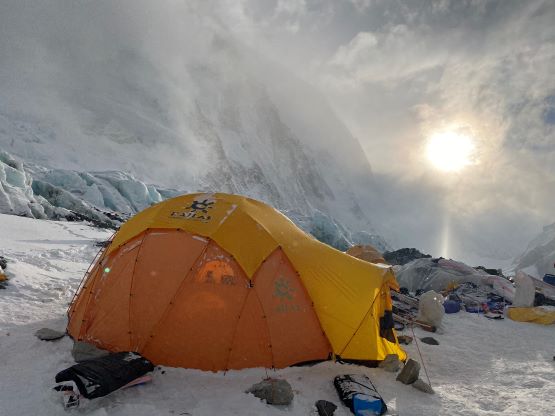
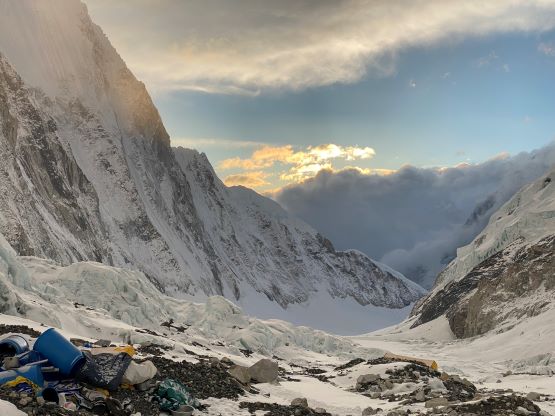




On my second night at 6450 m I still couldn’t sleep for much, but thankfully the objective for the 4th day was to go down. I was already coughing badly by the morning but again, we only needed to descend. The weather had turned to a snow blizzard with hardly any visibility. Our SST’s team started the descent after breakfast and in about half an hour we caught up to an Elite Exped’s team. The easiest solution was to just follow behind but Pemba led us passing that team and now we were ahead in the ping pong ball breaking trail. Sections of the route between C1 and C2 had no fixed rope and the fresh snow had obscured the crevasses. I later learnt that Mattew’s sherpa had fell in shoulder deep but managed to escape. At one point I became the first in the gang but kindly said no to go any further. Pemba then went ahead and I was the second, following the exact footprints that he made. The ladder crossings were also sketchy but Pemba was being very helpful by tightening the ropes for me. We took about an an hour’s break in the dinning tent of C1 and then committed to the Khumbu Icefall descent. Pemba led a blistering pace down that I had to be 100% focused to try to keep up, so didn’t even take a single picture in the next few hours. My coughing had become terribly bad but there’s no fucking around in the icefall so I just toughed it out. I checked the watch that we got down from C2 to base camp in 4 hours, several hours ahead of the rest of the team. I was hoping the sickness would go away by resting a few nights in base camp, but to no avail. After 2 nights I could not see any improvement, so made the decision to pay 1000$ round trip flight to Namche (3400m) to rest for a few days. Matthew, Shaima, Iraj, Asad and a few others all went down together as we were all feeling sick to various degrees.
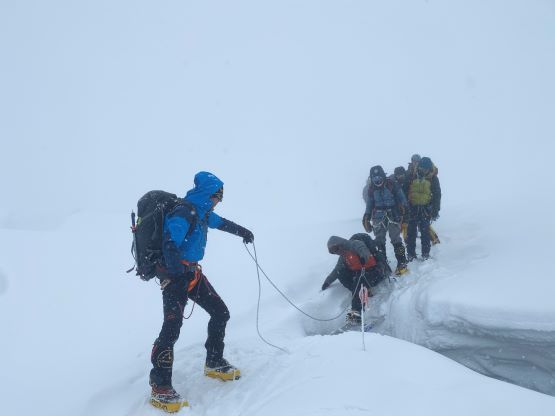

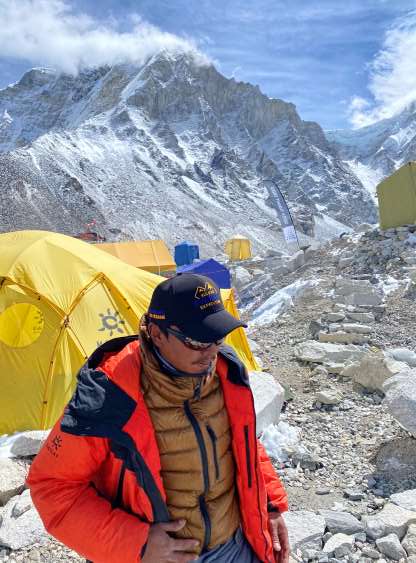
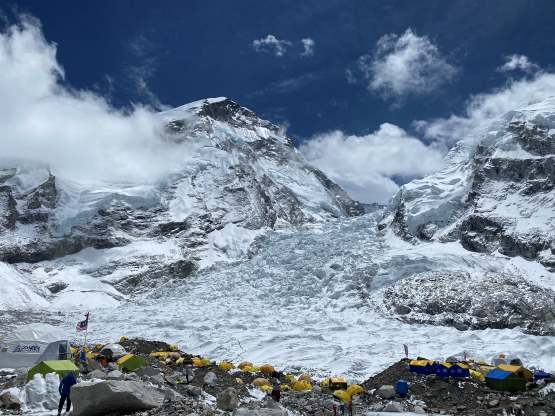
Day 27 marks the beginning of a 2-week long recovery period for me. I thought the illness would quickly go away after descending to 3400 m but I was wrong. I spent 4 days and 5 nights in Namche with Matthew and I was still coughing, but it was time to go back. The others mostly decided to wait for a few more days but I was afraid of losing acclimatization. I booked a private and direct flight through Alpine Lodge in Namche and got back to base camp at 8 am. Just after I landed I received a text message from Matthew that he’s about to start feeling sick again and needed a few more days, so I was the only one flying back on that day. I felt the altitude and partially lost my appetite, and by the evening I had lost my vision. Anything beyond 20 cm away was blurry. I waited till the next morning to make any decision and there was no improvement. The doctor came and assigned me a rescue (aka. med evac) down to ERA Hospital in Kathmandu. The doctor assured me that the vision would come back and I would come back in a few days so I only carried a small backpack down with me. The flight took 3 stages, firstly to Pheriche in a 2-person helicopter, then to Lukla and finally to Kathmandu. Together with me was a sherpa from 14 Peaks, who got sick and was “done for the season”. The sherpa told me that a lot of sherpas had already flown to Kathmandu due to illness.
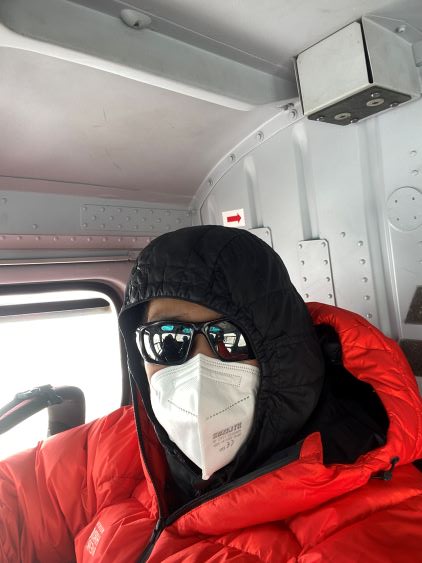




The hospital in Kathmandu wanted to do a full examination of my body including taking blood and urine samples, even though my problem was in the eyes. I did also tell them to treat my throat infection and coughing but they wanted to make sure the infection hadn’t gone into the lungs. The hospital had to book an eye specialist for me, and after a few hours of various examinations the conclusion was still not clear. We all suspected it’s due to rapid change of altitude but the eye doctor didn’t give me sure words. She did give me a bunch of medication and wanted to me to check again 7 days later on May 19, but that would be too late for my summit push had the vision come back, so I basically ignored that. The ERA hospital made me to spend 2 nights with them since there wasn’t any improvement in the vision, but after 2 nights they had to release me and I was transferred to Aloft, one of the best hotels in Kathmandu. The insurance company would end up paying my hotel stay since this wasn’t on the original agenda, so that was really nice. Two more days later my vision gradually came back and my coughing also magically disappeared, so 3 more days later I made the decision to fly back. This was a very tough decision since I had spent 5 days in Namche and now 7 more days in Kathmandu and it had been over 2 weeks since I did the acclimatization rotation. Two weeks is about the time for a normal person to completely lose acclimatization so I was really taking a gamble. I was fully prepared to turn around or to call another rescue as soon as I develop any altitude-related symptom and I was counting on no more than 20% chance of summit, but I couldn’t just give up now since my body was actually feeling fine.

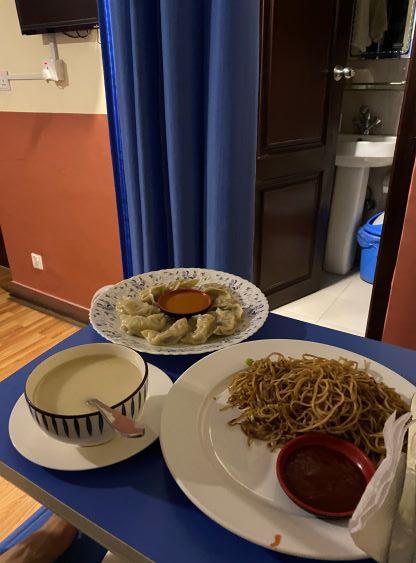

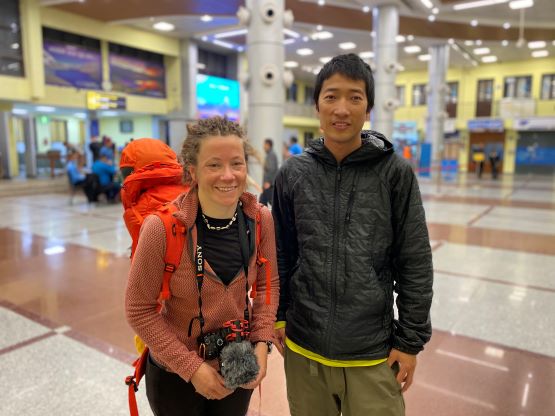
I must do something different this time since I developed problems by flying to base camp last time. I informed the sherpas as well as Thanes, the SST manager multiple times that I wanted to stop in Pheriche for 2 nights to break the flight into stages. After 1 night in Pheriche I was feeling good but I received a text from Dorjee that I needed to be back in base camp on this same day (May 17). Dorjee only gave me 10 minutes to pack up to catch a helicopter so I was back to the base camp in breakfast time. The weather forecast had changed and now we were aiming for the May 23 summit window, meaning we would leave in the evening of May 18. I consulted with the doctor two times over the next day and half. At first I was feeling great with oxygen level reaching as high as 92% but a day later, it dropped to 80% and my heart rate had increased to 100. I did not get much sleep at all since my heart rate was high, but the doctor said I was fine, so I took the food that they gave me for the higher camps and packed up. The previous night saw a collapse in Khumbu Icefall resulting in damage of the fixed ropes, so we anticipated some traffic jams on this night. Still, Dorjee wanted us to get ready at 1 am and leave at 2 am, a wee bit later than the other teams. The plan was to push directly to C2. I had no other choice as I had previously left the sleeping bag etc. in C2. Pemba had been coordinating the team from C2 so I would have no sherpa, but I’m not new to climbing so I told Dorjee that I’d be fine. Dorjee did kindly offer me to helicopter a bunch of my gears/food to C2 since I would have no sherpa to carry my loads. I learnt from the previous experience that I borrowed a pen and wrote down my name on the cache.
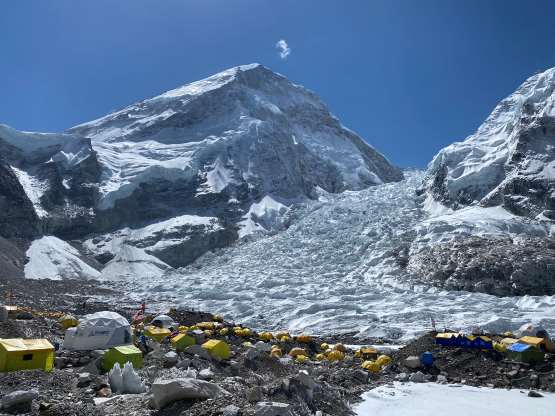


By this point the first group of SST including Darren and Matthew was high up on the mountain. I heard that Darren summitted on May 17 in a 24-hour epic from C4 and Matthew was about to summit the next day. May 17-18 was the first major window but the 20+ hour time was not inspiring to any of us here. Eric was with me, after completing his rotation to C4 and down to Pheriche to rest. He was still coughing from illness but said he was ready for the summit push (without oxygen). The majority of the second half of SST team would all leave together with me, but Szilard, the Hungarian climber opted to leave one day later to dodge the second wave of crowds. Some of us, including some sherpas had already quit as they simply couldn’t recover from the sickness. For most of the time through Khumbu Icefall I was with the Mexican father-and-son team until Eric caught up from behind near the vertical walls on the upper reach. I then went with Eric for about 20 minutes until I couldn’t keep up with Eric’s pace anymore. I was able to pass most people in the icefall but Eric’s speed was next level. I eventually arrived in C1 in about 5 hours after leaving the base camp. Dauren (who would also try without O2) got there earlier whereas the Mexicans, Elena, Katrina and others arrived 1-2 hours behind me. I was planning to take a long break in C1 and go to C2 with the team, but I got bored by mid-morning and opted to do the next stage solo.

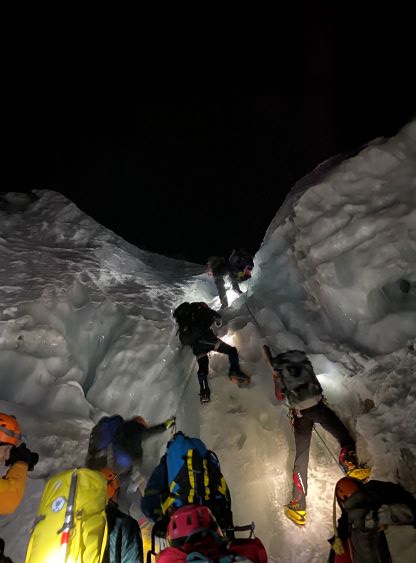


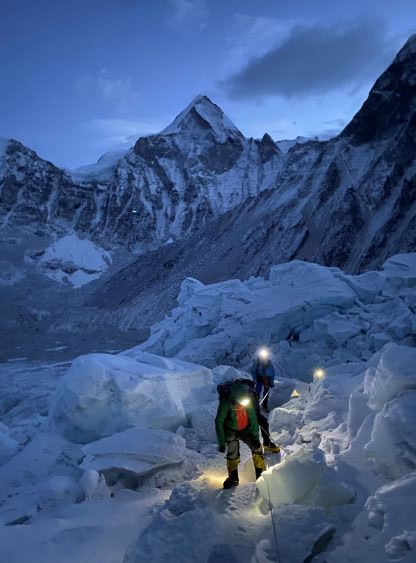





The push from C1 to C2 felt harder than my rotation three weeks earlier probably due to the rapid increase in altitude. I was struggling a lot and needed several breaks. One particular ladder crossing had also become sketchier, especially without a sherpa to help tightening the ropes for me. A day later, one climber fell 60 m into that crevasse but survived. Gesman was there to rescue and passed on the details to me. The last part was the most frustrating as SST’s tents located on the very far end of Camp 2, requiring an additional half an hour’s plod after entering the zone. I arrived in Camp 2 exhausted. For about 2 hours I was feeling some cramp kind of pain in both legs and I was wobbling and unable to walk, but the pain dissipated so that was a relief. I then entered my tent and got some minor panic attack kind of feeling for about an hour, but that also went away, so I decided to continue. Pemba, who was now unable to speak, told me that he’s sick but he had assigned a strong sherpa for me. I then met my new sherpa Nima, who had just climbed Lhotse. Nima was also coughing but assured me that he’d be okay. That night Matthew came down after turning around at 8700m due to bad weather. Matthew said the weather forecast was incorrect and the condition was miserable and dangerous. Matthew also witnessed multiple close calls including one sherpa who eventually died, and an oxygen bottle flying down Lhotse Face like a missile. I also heard the news that another avalanche/serac fall came down on the Khumbu Icefall so we got extremely lucky to time our ascent between the two events. The next day was supposed to be a rest day. Martin came down and passed on the news that our Singaporean friend Shri had died after summitting due to exhaustion. I was under shock for a while but I also knew this was an 8000m expedition and death should be a real possibility for any of us. Darren had also finally descended to C2 and told us the epic of his summit push. Apparently the sherpa let his oxygen to run out and they didn’t realize until Darren was basically feeling like dying.


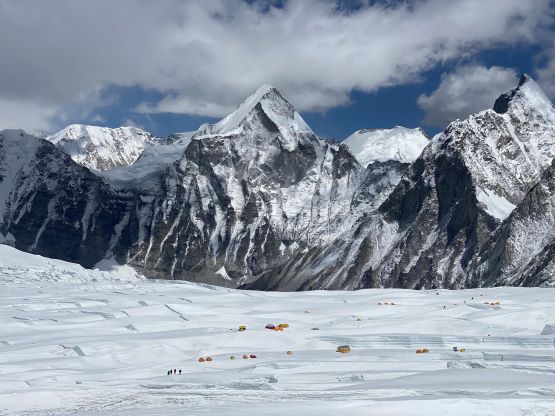



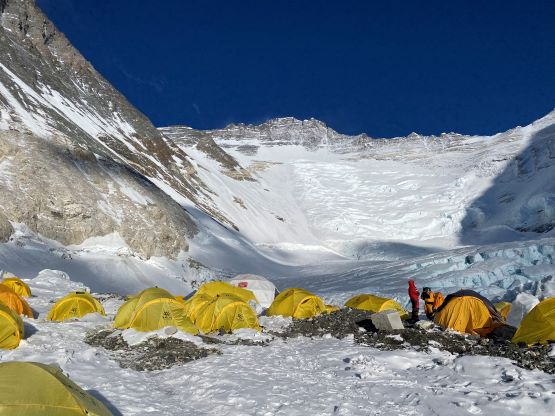
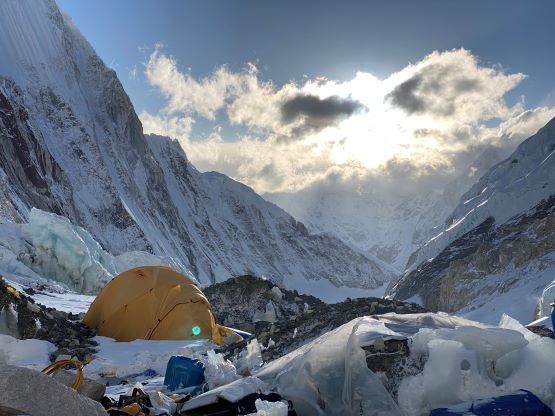
It seemed to me that the standard 5-bottle package wasn’t quite enough especially if one or two bottles got stolen by other parties, so I told Nima that we should grab the 3 extra bottles for Lhotse all to Everest C4 to maximize my chance of summit on Everest, and Nima agreed. The objective of May 21 was to push to C3 (7050 m) and I decided to not use oxygen. I don’t know if I would ever come back to this altitude (7000+m) after seeing and experiencing this trip so I wanted to prove to myself that I could push into 7000 m range without oxygen. I even managed to pass lot of oxygenated clients on the lower Lhotse Face. Meanwhile Nima carried my down suit, sleeping bag and 3 bottles of oxygen and his pack felt two times heavier than mine. From 6900 m onward I finally slowed down, breathing heavily for every few steps up, but I persisted through. To my relief SST’s C3 tents were not on the very far end, but the position was exposed. There was only about 30 cm of space between the door and the drop-to-death, so after getting into the tent I did not bother to get out again. Nima set up my oxygen system in the tent and we set the flow rate to 1 liter per minute (L/min) and it’s here that I started to learn that the flow rate also matters, at a big time. The more sherpas and oxygen bottles you had, the higher the flow rate you could set and the easier your climbing would be. Nevertheless for me, 1 L/min was good enough for 7000 m and I managed to catch at least 8 hours of sleep that night. It felt considerably easier than in C2 without oxygen. It was now that finally felt like I might actually have a chance of summitting.

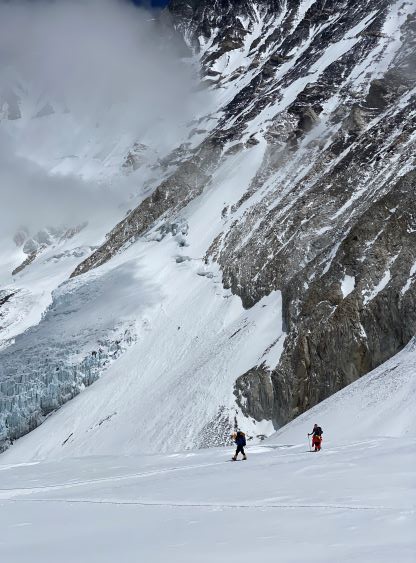

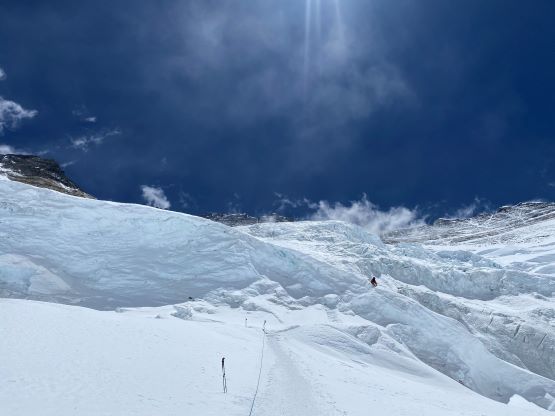


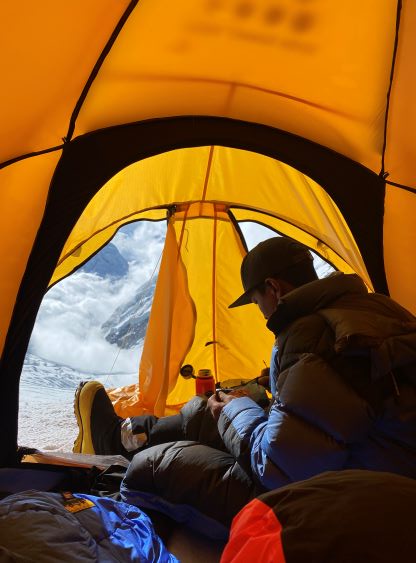

My coughing was back but I felt that was no longer due to the sickness but rather purely the altitude, so it never affected my energy level again. On May 22 we would push to C4 at South Col, 7900 m and we started later than most people. Since my sleeping was great I wanted to catch up as much rest as I could. The downside was to get stuck behind the conga line of 100+ climbers. Nima and I managed to pass most of them in the end mostly because I needed very few breaks. Not far up from C3 I recognized Grace Tseng from Taiwan descending, after turning around at 8300 m on a no-O2 attempt. I talked to her and she said with the weather and coughing there’s no chance. A few days later I got the message that our friend Eric Gilbertson also turned around that morning, at 8500 m. After a few hours on steep snow/ice we traversed to the “yellow band” with some class 3 rock moves. The next stop was Lhotse C4, then another traverse, another rock band followed by another rockier traverse later we arrived at Everest C4. We started as one of the latest in SST tem but arrived there the earliest and subsequently claimed a good tent. This proved to be essential as well as those who arrived later somehow had to pile 5 people into a 3-person tent, while I had a 3-person tent to myself. Nima had gone out to socialize but another sherpa (presume from a different company) came in and took our stove. I thought he’s Nima’s friend so I gave the stove away. Big mistake. This sherpa never returned it so Nima and I were stuck with the 2.5 L water we had just boiled, for the entire summit push and the subsequent descent to C2. Nima did not carry my sleeping bag to C4 since he’s confident on my speed that we could summit and descend to C2, squeezing two days of work into one long day. I was not particularly happy about that, but reluctantly accepted. This meant I would not get any sleep but we only had 5 hours there anyway to shiver through in the down suit.



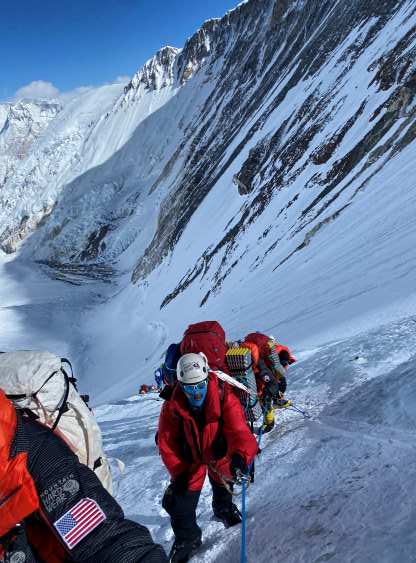



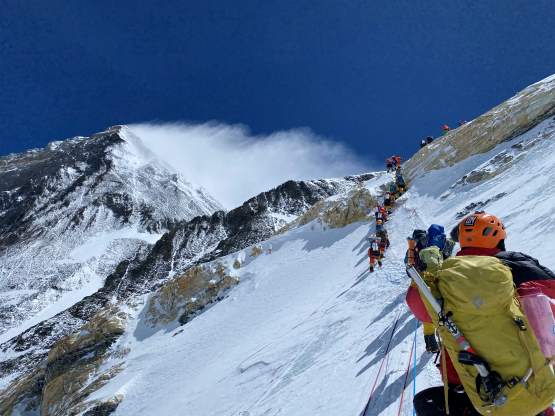



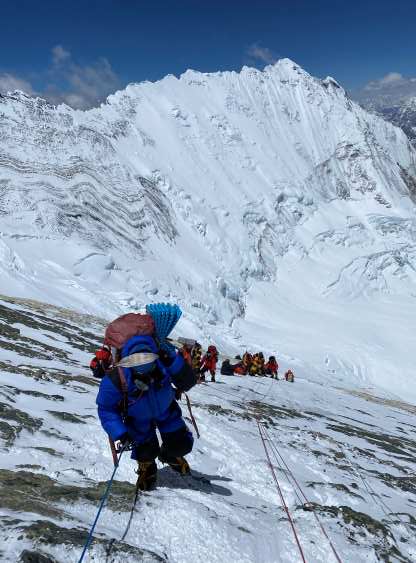
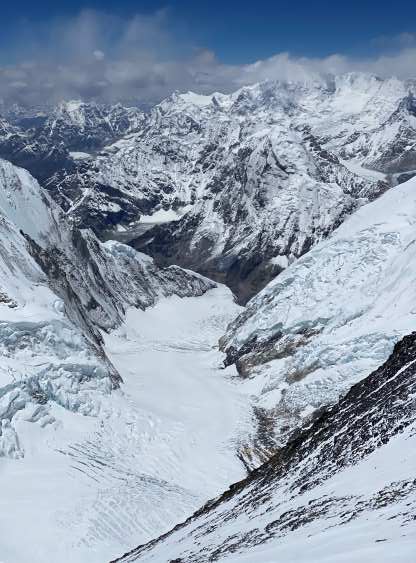





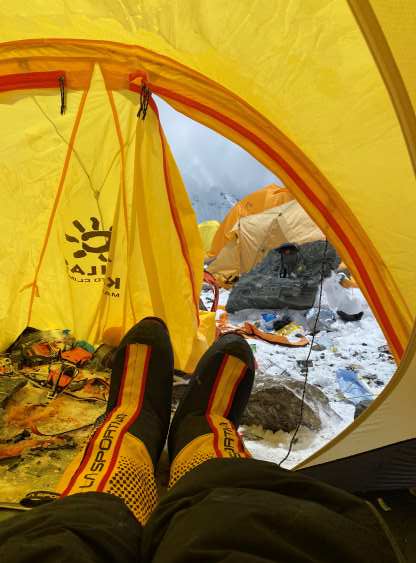

It had started to snow heavily after darkness and there was no sign of improvement in weather. It appeared to me that at least 10 cm of fresh snow had fallen. My phone was showing 9:30 pm (passing the now standard starting time) and nobody was moving. Nima was still away and I had no idea where he was. I started to panic that maybe the weather window had collapsed. Nima came back at around 10 pm and I informed him that we must get going even though there was no sign for the snow to stop. Nima checked my watch and agreed. It wasn’t until 2 days later after talking to Kristin Harila that I learnt my time had been switched to Chinese time so it was actually 8:30 pm when we started, but I thought it was 10:30 pm. This meant there were only several parties ahead and all of them turned around miserably. We saw the headlamps facing towards us, and that’s not good. Nima and I also got off-route by going too far climber’s left, as the tracks were covered. A while later the terrain became steep and we were cramponing up hard ice covered in 10-15 cm fresh powder. We discovered old ropes buried deep in the snow, and Nima fell hip deep into the crevasse. We caught up to a Nimsdai’s sherpa who appeared to be waiting for us. Nima and that sherpa then short-roped together while I tailed behind, carefully following their footsteps. I told them that we must traverse climber’s right to aim for the headlamps. We did that, and joined the tracks but definitely had wasted valuable time doing all those nonsense things.
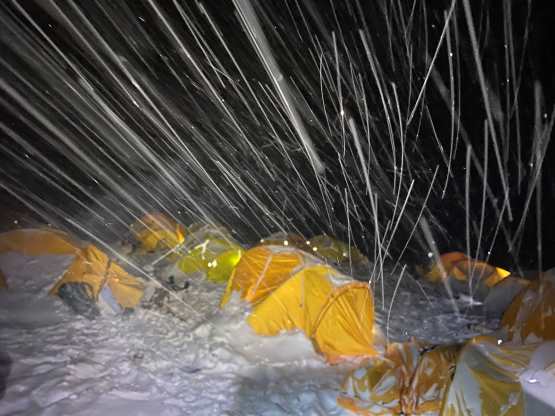
At least now we finally had this year’s fixed rope and a track. That Nimsdai’s sherpa started to fall behind and I would never end up seeing him again on this day, so we assumed that he turned around as well. We soon crossed path with the first team that turned around, in which two sherpas were dragging one climber sliding on his ass downwards. That climber was apparently unable to get down himself. By 8200 m elevation we became the first team ascending this mountain on this day, breaking trail in the fresh snow. Nima and I found the rhythm that it’s better for me to go ahead, set the pace and break trail while Nima stayed behind to keep the rope tight. I was overall new to this jumaring thing and I found it’s very difficult to operate a loose rope since then both of my hands had to be on the rope and it’s difficult to maintain balance. The downside of going first was to break trail, do route-finding and dig the buried rope out occationally, but I was definitely better on those than to deal with the extra rope work associated with jumaring. Our first and the only break was on the “Balcony” at 8450 m where Nima switched by oxygen bottle to a new one that’s been previously left there. This process took several minutes. I was feeling difficult but as soon as I put the oxygen mask back on, I was feeling fine again. Unfortunately the wind had picked up, carrying the new snow crystals and smashing them onto my face as we ascended higher on the SE Ridge towards the south summit.

Looking back I could see a streak of headlamps lower down on the mountain but they all seemed to be falling back so nobody was moving quick. I was hoping for someone else to catch up to share the leading but this wasn’t going to happen. Higher up we finally saw two fast-approaching head-lamps but they were still at least an hour away. Nearing the south summit the terrain became steep and we had to climb around several rock buttresses on climber’s right side, on 45 degree snow. On the flatter sections the rope was mostly buried so extra work was needed to dig them out. I did no lingering on the south summit but immediately descended that 10-meter down to the tricky traverse towards Hilary Step. This traverse involved some 3rd class scrambling and some up-and-downs. The wind was howling to the point that I really needed to put my goggles back on, but they had been fogged and iced up much earlier in the push. I spent several minutes scraping just enough ice off using bare hand to that I could see the immediate ground ahead, but another few minutes later the goggles got iced up again that I completely lost the vision. I took them off, hugged around a boulder and started crying. I told Nima that I didn’t know if I could make it after all if I couldn’t even open my eyes, but he yelled at me to just tough it out. I did what he said, climbed up several steep steps in the Hilary Step area while frequently using my left hand/glove to cover the face, and I was able to tolerate the pain. Above the Hilary Step we still had fair amount of ground to cover. I was feeling very tired and asked Nima to turn the oxygen flow rate to 6 L/min (was previously 4 L/min after Balcony). I don’t know if he did that because the next time I checked my flow (during the descent), it was set back to 3 L/min. Nevertheless I persisted through and made the summit at 2:57 AM local time. The pair of fast-approaching head-lamps were several minutes behind us and we later learnt that they were Kristin Harila and Lama, there to set speed records. It took them 5.5 hours from C4 to summit and us 6.5 hours, but considering the route-finding error and the trail-breaking our time was pretty damn quick.


The complete darkness, the -30 C ambient air temperature and the howling winds made us descending after spending only several minutes on the summit. My phone was leashed to my down suit and Nima never took any picture, so I couldn’t get a good picture of myself up there, but that’s fine. I had been recording a GPX track from Lukla all the way to the summit and we also didn’t summit alone (together with Kristin), so nobody could question our success. Nima set a blistering pace down and I had to focus 100% on keeping up. I descended the entire Hilary Step area facing outwards using the fixed ropes as a handline and didn’t even need a single rappel. A few spots were sketchy but I was too cold to even think. Thankfully in the pitch dark I couldn’t see the exposure as otherwise I might opted for several rappels. I called for a break to regain some strength for that short re-ascent to south summit, and looking back I saw Kristin and Lama’s head-lamps descending Hilary area. My fingers could survive 15 seconds for a much-needed photo, but my phone died before my fingers got frozen. I reluctantly put the phone back into the inner pocket and the phone came back alive half an hour later at around 8500 m. It’s here that we finally encountered the gang and Kristin/Lama had also caught up to us. Nima and I yielded to them but also managed to pass the ascending line in a timely manner. I managed to take several pictures from there to around the Balcony before the phone died again. While descending from the Balcony I got to see one of the best sunrise horizons with Makalu and Lhotse catching alpenglow in front, Kangchenjunga looming far behind to the left, and the biggest shadow (Everest shadow) I’ve ever seen to the right above Nuptse. Unfortunately without a photo the only way for you guys to take in this view is by imagination.

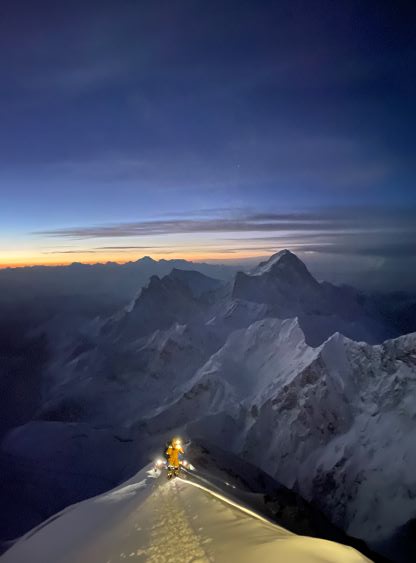



Nearing the bottom of the descent Nima stayed back to help a struggling solo sherpa who was descending on his ass. I went ahead, now following the correct route but encountered a dead body, facing upwards right before C4. I immediately turned away and that scene still hurts even today. I do not want to see dead bodies but I guess on Mt. Everest it’s inevitable. Later I was told there were another body near Hilary Step but this year had a lot of snow that it’s covered. In some years climbers had to use one dead body as a “foot hold” and glad I did not have to do that. It’s also worth noting that I descended back to C4 in 9 hours round trip and never got direct sunshine on my face. I never needed sunglasses/goggles for that matter because if I did need I could be in trouble because I was never able to figure out how to prevent them from being iced up. I lost feeling on some parts of my ears. I did not know where exactly the frost bites happened but it was already too late. This made the final decision for me to bail Lhotse even though I had spent 10,000 dollars on it. Sometimes I appreciate this hard-NO kind of deciders because otherwise I’d be keep thinking about it and might even regret, but in this case there’d be no regret. I agreed with Lama that at any cost we would push down to C2 as planned and I might need to call for a rescue from there.

The wind had never died down at C4 and it was still very cold. Nima was unable to find our stove so we did not get any rest there but immediately descended towards Lhotst C4. I barely had enough energy to embrace the winds on that annoying horizontal traverse out of Everest C4, and I called for one long break at Lhotse C4. We simply got into another group’s tent and used their stove to melt ~500 mL of water. Meanwhile we both took a nap while just sitting in the tent. We learnt that only a few people summitted Lhotse on this day while most turned around due to avalanches and high winds. The air temprature had warmed up enough that the glasses fogging was thankfully no longer an issue. Near C3 I was feeling shit but I thought I was just tired, but after getting into the tent I realized the oxygen had run out. I immediately yelled at Nima about that and he was able to find another (mostly empty) bottle. I took another nap with that oxygen bottle but about 2 hours later I woke up again, now feeling dizzy. Of course the oxygen ran out again, but Nima said there was no more oxygen bottle at SST’s C3, nor stove for that matter so we must get moving again. I was mad but I had to accept the situation. I told Nima that I needed no assist in descending so he should stay back and somehow get a bottle and catch up to me, just in case I passed out. It turned out that I was fine descending without O2 but I was the only client on this part of the mountain without an oxygen mask. I was also coughing blood out but that was from the throat and not the lungs. I only partially recovered the feelings from the ears so by the time I got down to C2 I immediately called for rescue. The ground support radioed back that my insurance might refuse to pay my second rescue in a roll. I asked how much would that cost. They said 5000 dollars for the flight down to base camp. I said even if the insurance wouldn’t pay, I would pay, so they initiated the evacuation. The helicopter eventually came at around 5 pm, but the weather had turned into a white-out. The heli flew down and the manager told me to wait for the next morning. I was mad, but I had no other choice.





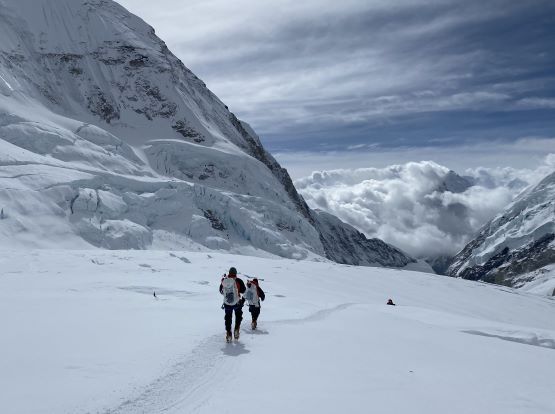
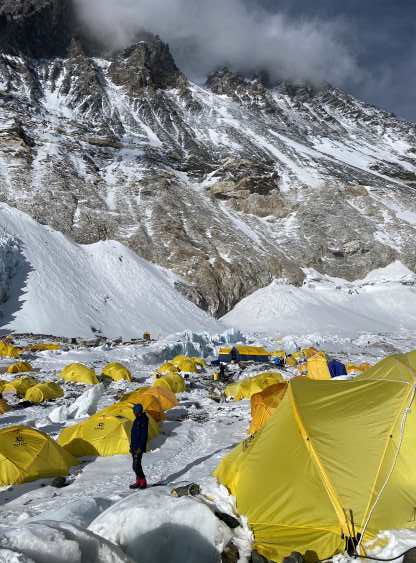

I did not get much sleep at all on my last night at C2, but the helicopter did come at around 6 am. A few minutes later I was down to base camp. Pemba, now at base camp had already packed my stuffs into 3 duffels so another few minutes later I was down to Pheriche. The layover there would be several hours but Matthew came down so I finally had company to talk to. Kristin also flew down and we all flew the next stage to Lukla together. A few more hours later we were back to Kathmandu, concluding a total of 13 helicopter rides for me in this one trip. We all went to hotel (Fairfield Marriott) first to check in, and then Dauren and I were transported to ERA hospital to check out. They still took my blood sample even though I said my only problem was frost bites. Dauren’s problem was much bigger and needed to be transported to another hospital, while mine was rather minor. I only stayed one night in ERA and then they released me. Of course the insurance company had no issue paying this entire second rescue. A few more days were then spent in Kathmandu socializing with team mates before the long journey homewards. Our Hungarian friend, Szilard died near Hilary Step so two of us from one dinning tent didn’t get back. The overall summit rate among all teams was about 50% but for us climbers from SST, I estimated the summit rate no higher than 30%. Eric, after walking down to Lukla, passed the logistics to me about Sri Lanka high point but he himself decided to go for Kangchenjunga, which took several days longer than he thought. So in the end I was the only one going for Sri Lanka but at least Eric summitted Kangchenjunga. I eventually got back home on June 1 after laying over in Mumbai, London and Seattle.




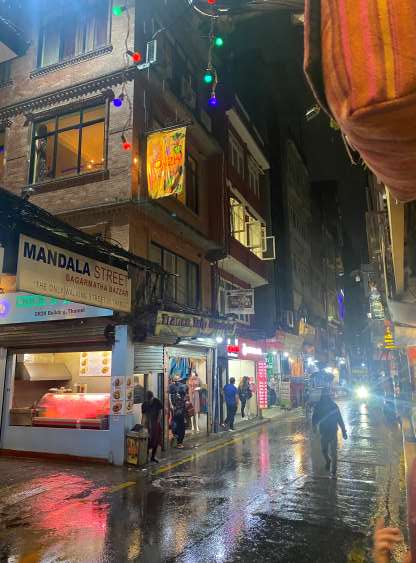

That’s the true story I experienced on Everest, which is definitely different than what most of us would expect based on all of the glamorous posts on Social Media. People do not talk about the hardship behind the success but for those dreaming or planning Everest the hardship is even more important than the success glories. The touring companies advertised their “100% success” but they didn’t say how they calculate the denominator. The truth is, they put “the team that left C4” on the denominator but how can they ignore those that turned around before that. The true denominator should be all of those who purchased the permit and showed up in Nepal. I sure was unlucky to be climbing in a difficult year but I bet even on a “good” year this climb would still not be as easy as people think. Most of us climbers from Canada do not have any high altitude experience and had never even broken 4000m, and yet tell everyone loudly that “anybody can climb Everest”. I get the part that North American climbers hate commercialization and fixed ropes etc. but I don’t get how they got the confidence to make that statement. A 5000m climb is 5 times harder than a 4000m climb, a 6000m climb is 5 times harder than a 5000m, and a 8000 m climb fells 20 times harder than a 6000 m climb, and Everest is almost 9000m high. Most of us would have trouble ascending to 6500 m but on Everest, you need to sleep at that altitude for several nights, and spend over 1 month living at 5300 m altitude. In 2023 season most, probably over 80% of the climbers including sherpas in base camp caught that unknown virus infection. It eventually became who could recover from that. It comes down to how strong your immune system is and factors beyond what one would expect from a climbing trip. On the other hand, one do need some technical climbing background to efficiently climb through Khumbu Icefall and various cruxes on the final summit push. Many of us unluckily picked a wrong summit day when the forecast was incorrect and had to turn around, and most of us summitters came down with some degree of costs (frost bites, snow blinds etc). No matter how you plan Mt. Everest, the summit is never guaranteed. You need stones but you also need a lot of luck, so good luck.
I figured some might ask me about gears, so here’s the important ones:
- Western Mountaineering -32C sleeping bag – used from BC to C3
- Western Mountaineering -40C sleeping bag – left at BC
- La Sportiva G5 – for Lobuche East
- Scarpa Phantom 6000 – used in rotation
- La Sportiva OlyMons – summit push
- Salomon trail shoes – trekking and base camp
- Kailas down suit – summit push, purchased from SST
- MEC Overlord gloves – BC to summit
- Mountain Hardwear Abs. Zero Mitts – stayed in backpack, not used
- Petzl Lynx crampons
- Harness with 2 leashes, 1 jumar, 1 ATC
- Helmet
- Ice axe – not needed for Everest, should leave at home
- Julbo glacier glasses – BC to C4
- Oakley glasses – trekking and BC
- Julbo Goggles – iced up, mostly not used
- Black Diamond ICON headlamp – summit push
- Oxygen mask, regular and bottles – provided by company